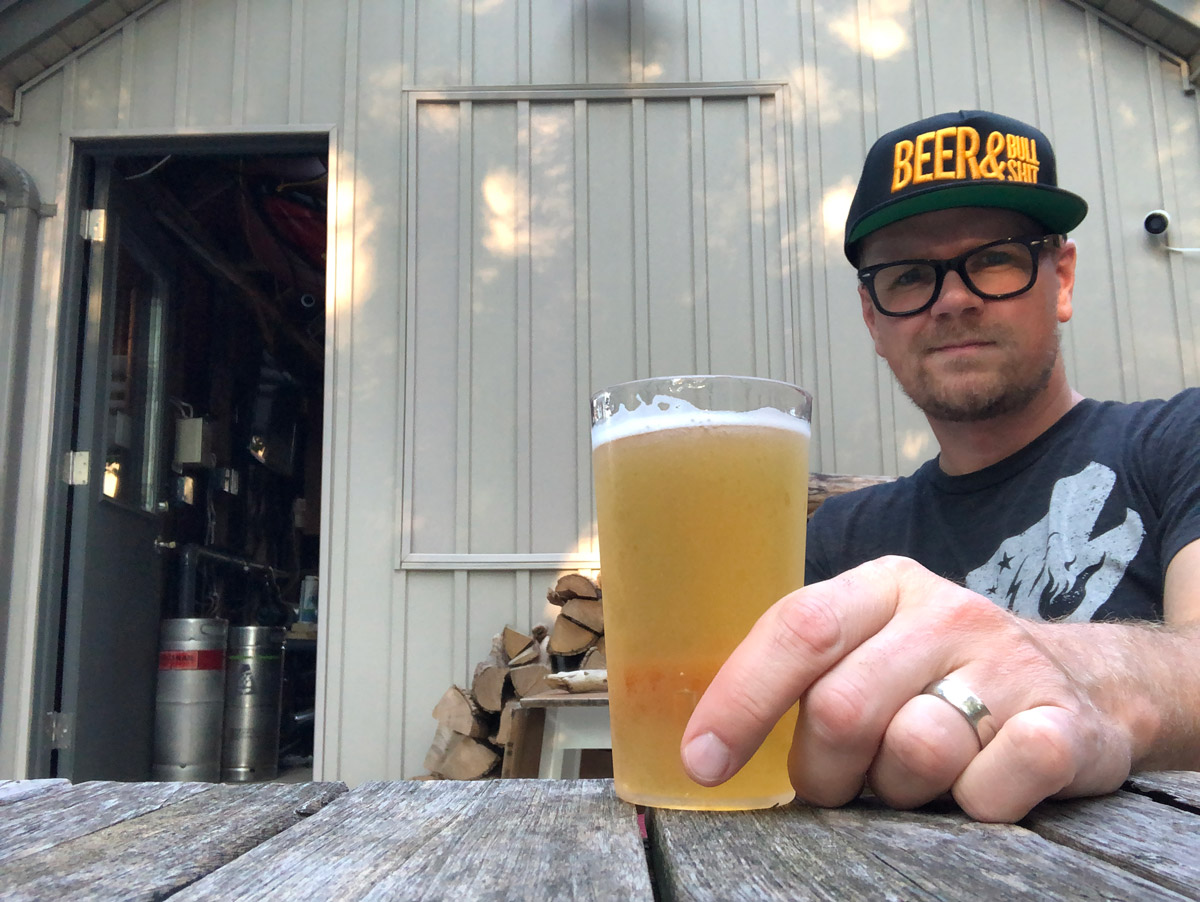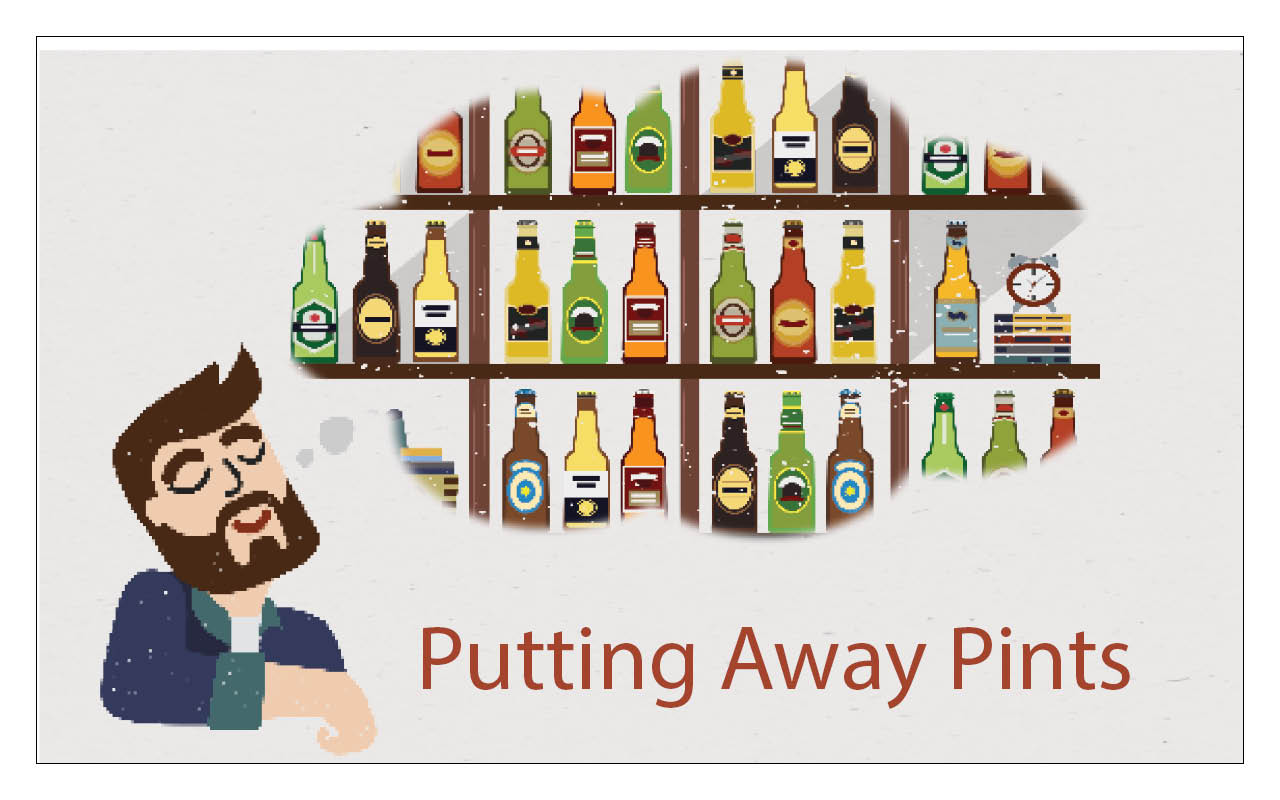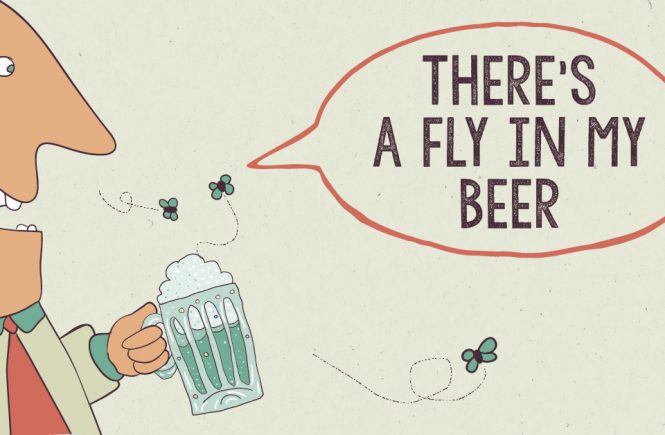
I don’t find myself pining for a night at the bar all that much. Maybe it’s because I am getting older and am a married father of two, but the idea of coordinating a meet-up at a pub, getting in an Uber, spending $11 on a drink, and—worst of all—putting on pants without an elastic waist, just isn’t something that I miss all that much, apparently.
What I did miss, I have discovered, was something that was inarguably a part of why I fell in love with well-made beer: Draught.
Opening a bottle cap, prying open a cork and cage, or cracking a can of beer each provide their own sort of primal satisfaction, but there is something that just feels more refined about a beer poured neatly into a clean glass from a draught tap.
If you don’t take just a second to marvel at a well-poured pint of draught before your first sip—with its playful effervescence and pillowy layer of head—beer probably isn’t your drink. Maybe you’d be better off with something from the shooter menu. For me, there is simply no better beverage than beer and no better delivery mechanism for that beer than a draught tap.
And so, during a time when the idea of sitting down to a properly drawn pint somewhere became a complicated mess of knowing which level of lockdown we were currently under, trying to find a patio and a day with weather that would cooperate, packing the hand sanitizer and the masks and squeezing myself into a pair of hard pants, I finally said “fuck it,” and took matters into my own hands.
I purchased a keg fridge so that no stubborn viral pandemic could ever again come between me and my love of freshly poured, cold draught beer.
Let me tell you, it has been glorious. I now have fresh, cold, local lager flowing from my garage on demand. I just stopped typing that last sentence in the middle of it because it made me want draught beer—so I walked 15 feet and fucking poured one. #LivingTheDream
However, there are a few things I’ve learned in the journey to bring sweet, sweet draught into my home that you should probably know before you too take the plunge and join me on the road to blissfully-beer-bellied self indulgence.
First, consider your commitment to beer consumption. You can get a kegerator in a variety of sizes, ranging from smallish single-keg fridges to commercial versions that could hold five or more kegs. unless you are hosting dozens of people every evening, you won’t need five kegs. You might, however, want to consider something that will hold at least two kegs. Buying an entire keg of one type of beer can be a considerable commitment to both one style and to a large volume of beer that has a shelf life.
My suggestion is to opt for a dual tap kegerator. My fridge has two taps and can fit two 20L kegs. This means I can have some variety (one of my taps is dedicated to pouring seltzers currently) and I won’t get tired of a beer or leave it sitting around too long as I might if I had to consume 50L.

Second, now that you know what size you want, unless you are very handy, do not ask a brewer for advice on which keg fridge to purchase. Brewers spend most of their days cleaning, maintaining, and using the equipment with which beer is produced. Sometimes that equipment breaks and they need to MacGyver solutions out of materials on hand. And they can. They are the type of people who, in high school, turned household objects into functioning bongs just for fun. If you’re like me, you are not like this, and your innocently-worded “which fridge should I buy?” inquiries will be met with the disdainful follow up-question, “Why don’t you just make one?”
It’s the same reasons I have no interest in homebrewing: It seems like a lot of work and I’d sooner leave the work to the professionals. For the time I’d waste making something shitty, it’s worth a couple extra bucks to just get the best, so I recommend you skip asking beer-makers and just start googling.
There are a handful of great fridges available at places like Toronto Brewing and you may also have luck going directly to a manufacturer. I found mine by contacting the Danby Factory Outlet in Guelph and inquiring about “scratch and dent inventory” (hello deep discount for some cracked plastic). Once you start looking for fridges online you’ll find that your friends at Instagram and Facebook have handily started to populate your feeds with kegerators and you’ll note they are often on sale. don’t rush to buy the first one you see.
Third, you’re going to get gas.
Er, you’re going to need to buy gas. Your kegerator will likely come with a CO2 tank and you’ll need to fill it. Seek out an industrial gas or welding supplier like Linde Canada and get your tank filled with food grade CO2. Then, once you’ve hooked everything up, check your connections for leaks with some soapy water. Bubbles mean you aren’t sealed properly. It’s very annoying when you go to pour a beer and realize you’ve been slowly leaking CO2 all night and now can’t draw a beer.
Fourth, again, consider your commitment to beer consumption. Having essentially unlimited cold, fresh draught in your house is a glorious thing, but it can also be a dangerous thing. I have already, for example, had a couple “accidental eight beer weekdays.” It is easy to pour yourself a refreshing post-yard-work beer in the afternoon and then keep absent-mindedly filling your glass until you are burning your family’s dinner on the grill and realize you’re half in the bag.
So if you do opt for the keg life, consider taking measures to monitor or slow your consumption. I invested in smaller glassware dedicated to draught. With 12oz pours, at the very least, I have to get up more often for a refill and am more conscious of my intake. I’ve also used the space in my fridge that was previously filled with cans and bottles of beer to load up on non alcoholic options like juice, hop water, and bubbly water to occasionally alternate them with beer.
And finally, be prepared to host. For some reason, once you have draught beer available, your house becomes the go-to destination for outdoor family gatherings, hangs with buddies, and neighbour drop-ins.
Get ready to be popular.



